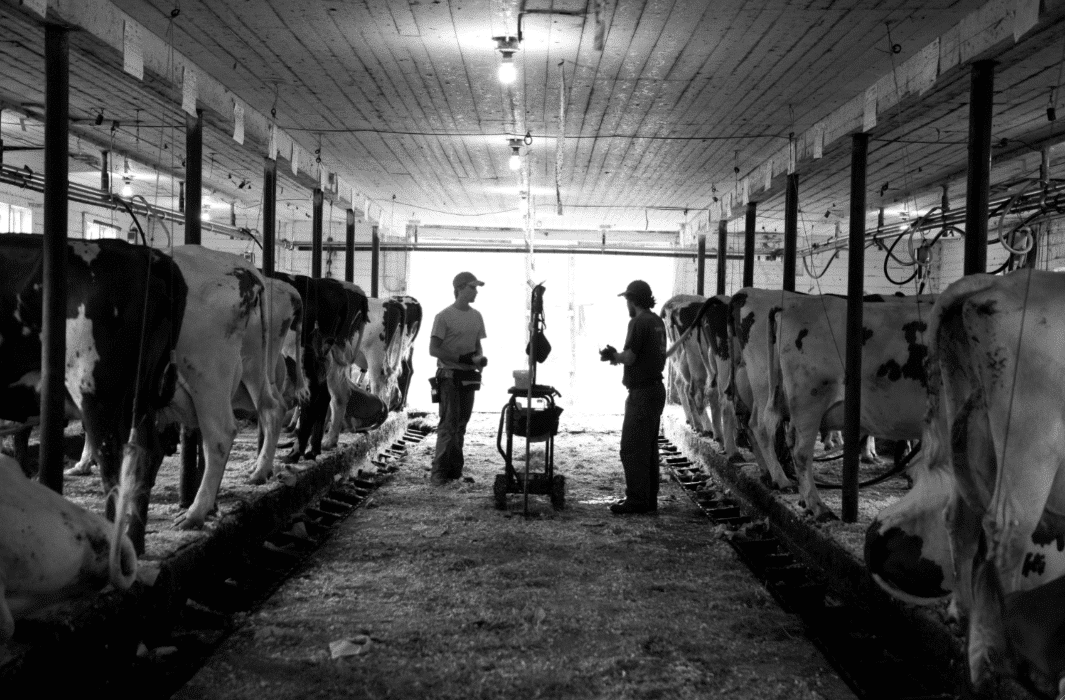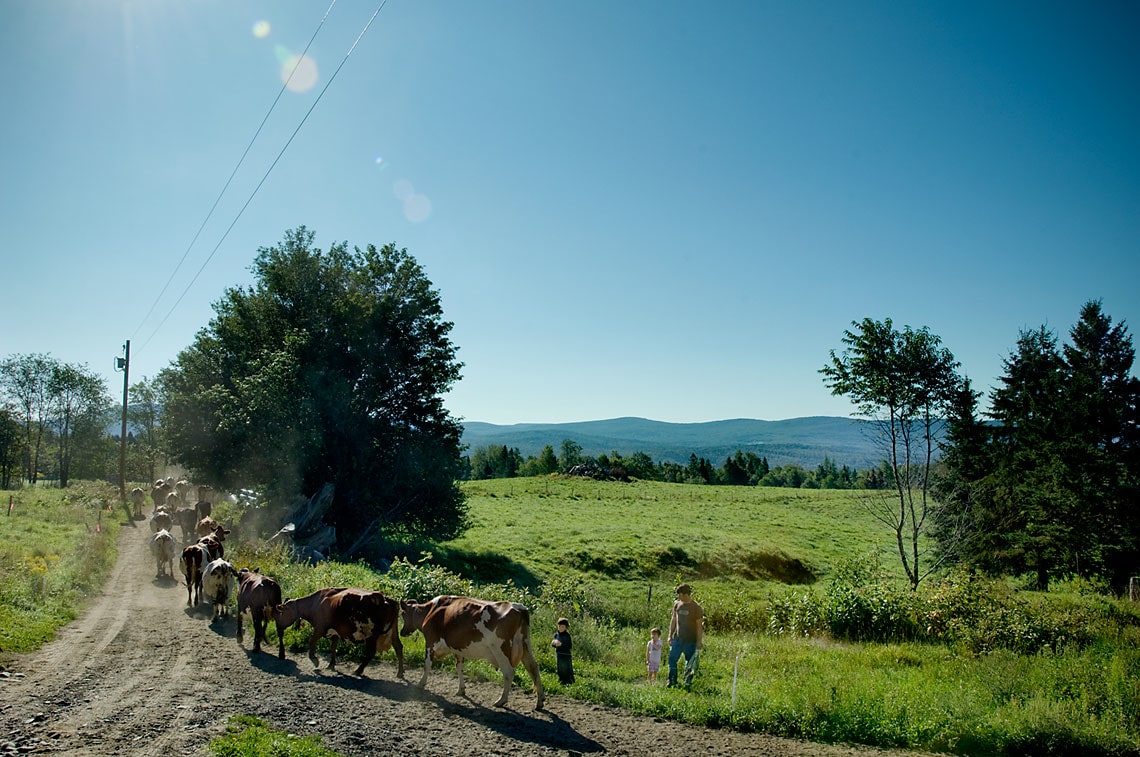May is a month of anticipation in northern Vermont. Winter has finally loosened its icy grip (well, most years…), the days grow longer and the sun warms us enough to spur the first sunburn and backyard cookout. Farms buzz with activity, caught up in the endless preparations for our short, intense growing season. At a glance, May in Vermont is spring in full swing bordering on summer – but at the root of it all we’re still waiting, and watching the grass.
As a pasture-based dairy, Jasper Hill Farm has a highly-tuned awareness of our pasture grasses. Our farm isn’t billowing prairie grassland, but a rocky hillside farm composed of roughly equal parts pasture and woodlot. The views are staggering and the wind blows through like a whip. Once pasture growth hits a critical mass, our cows are on grass as much of the year as weather permits – usually May through October in our sub-arctic climate. Pasture is important to us not because it helps us make more milk, but because it helps us make the best cheese.
At Jasper Hill Farm we milk a herd of about 45 Ayrshire cows, a compact Scottish breed chosen for their milk quality and suitability to our climate and landscape. Not a high-producing breed, an Ayrshire makes about 60% of what a Holstein-Friesian, the industry standard for dairy, might produce in a given lactation cycle. While volume is good for business, we are far more focused on the components of the milk: excellent protein and small fat globules make Ayrshire milk ideal for aged cheeses, and a diet of primarily pasture grasses and dry hay provides for the health of the cow and contributes to the cleanliness of the milk. Because we make several raw-milk cheeses, hygiene in the herd is just as important as in our creamery: we need clean milk to make safe cheese. Bovine health starts with the feed: a diet of pasture grasses in the summer and dry hay in the winter keeps our cows healthy and milk components where we want them for cheesemaking.

In the barn, each teat is individually cleaned, sanitized and dried before the milking unit is attached, and we apply a protective sanitizing solution after milking. Each teat is “stripped” – milked by hand to provide a visual milk inspection and to stimulate the let-down reflex before attaching the milker. Visiting dairy farmers are often surprised that it takes us 3 to 4 hours to milk our herd of 45 cows, but the proof is in the pudding: our milk has repeatedly won awards for low somatic cell counts, testing cleaner than even some pasteurized milks in the running. We spend a good deal more making milk on our farm than we would pay to purchase it elsewhere, but we can rest assured in the quality and safety of our cheese’s primary ingredient.
Cleanliness isn’t the only factor when making good cheese: it’s going to have to taste good, too. Starting with fresh, clean milk is key, but as cheesemakers we also rely on a host of microbial ripening agents, some present in the milk and some added during the make. The American ingredients market is sadly deficient when it comes to interesting cultures for cheesemaking: the more established cheesemaking traditions in Europe have a much broader library of cultures to call upon. One way we are trying to make up the difference is with our new microbiology lab, dedicated to isolating & identifying those adjunct ripening agents that make our product unique and exceptional, with the goal of reproducing these for use in our creamery. The biological diversity endemic to our raw milk gives us the chance to produce something truly unique: a taste of the fleeting sunshine and pasture grasses in our little piece of this beautiful state.
Seasonality poses a bit of a challenge when trying to produce consistent milk; as the cows’ diet and activity level changes, so does the milk. Rather than fighting seasonal change, we try to roll with it: our Winnimere cheese is made only with raw, winter milk, when the cows are housed in the barn and primarily consuming dry hay and producing a rich, fat-heavy milk that’s well-suited to soft, high-moisture cheese. Despite winning Best of Show at the 2013 American Cheese Society conference (a cheesemaker’s equivalent of the Stanley Cup), we will continue to produce this cheese on a limited, seasonal basis. Like waiting for the next season of Winnimere to arrive, waiting for the grass to grow is just part of what we do… it’s worth the wait. ![]()
